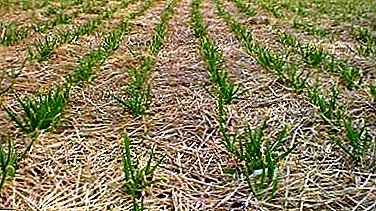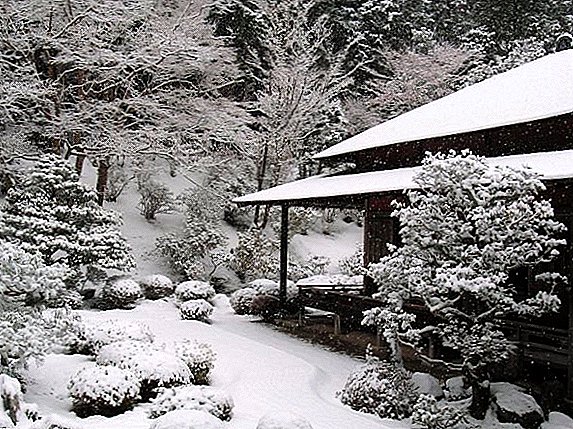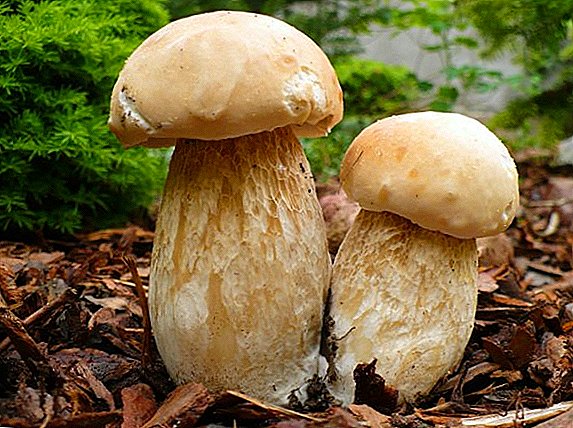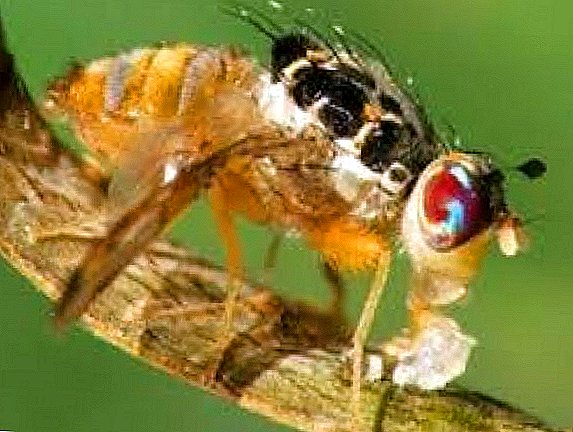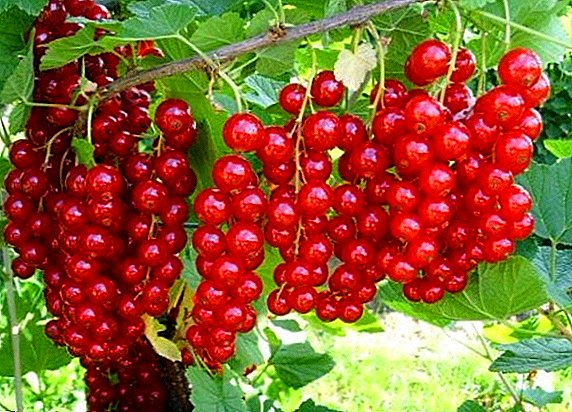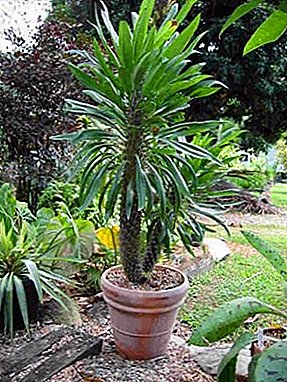
Pachypodium - a real original. It looks like a palm tree and a cactus, and its flowering is no less beautiful than that of the flowering representatives of the flora.
You can get a plant in several ways - even grow from seeds. And the care of the pachypodium flower is not complicated at all - it feels great in an ordinary apartment.
Intrigued? Then it would not hurt to get acquainted with the plant more closely and in more detail to understand the features of caring for him.
Characteristic and description
Pachypodium or in Latin Pachypodium comes from the family Kutrovye and is a perennial succulent in the form of a tree or shrub. In the room culture, he came from the hot spots of Australia, southern Africa and Madagascar. The people of this succulent even got the nickname "Madagascar palm", although it has nothing to do with palms. Only its appearance in adulthood, when a tall, spiny stem crowns a bunch of long leaves, gives the impression of similarity with this tropical tree. The Latin name of the plant comes from the phrase "fat leg", which indicates the impressive size of the stem.
In nature, slow-growing pachypodium sometimes grows up to 10 m, whereas indoors it can grow up to 30 cm (maximum for some species) or up to 1.5 m. You can admire the "green friend" for 15 years or longer depending on the conditions of detention.
Some lovers of flora notice in pachypodium similarity with euphorbia, and this is not accidental. Plant too poisonous and dangerous however, its juice does not leave burns on the skin. Still, it is better to avoid contact with the milky sap, very carefully replant the tree and place it away from children and animals so that they do not hurt themselves with sharp spines.
The leaves of the "Madagascar palm" are simple and whole and grow from the very top of the trunk. The stem of the tree is very thick, fleshy and covered with sharp spines. The flowers are collected in a brush, snow-white, rather large and elegant tubular shape. They reveal and delight the florist for their beauty, they are mostly during the day.
Kinds
Exists at least 20 varieties of this amazing succulent. In indoor floriculture can be found:
- Pachypodium Lamer, or in Latin Pachypodium lamerei Drake - This tree is very popular in home culture. The mighty, sometimes branching, stem with prickles and dark green leaves forming an outlet on its top make the plant a classic member of the genus. The flowers are creamy or pale pink with a yellow throat and a diameter of up to 11 cm. The spines are arranged on the tubercles arranged in a spiral - 3 pieces each. In the room, this representative of the flora grows up to 50 cm.
- Pachypodium Zhaya, otherwise known as Pachypodium geayi - A tree up to 60 cm in height with a mighty trunk covered with "needles". Very similar to P. Lamer. Differs from it only in narrower and pubescent leaves. Flowers are white with a yellow throat.
- Pachypodium short stem, otherwise called Pachypodium brevicaule - an unusual species, which after dropping leaves is very similar to a stone. Its flat and smooth stem of a gray shade and with a diameter up to 60 cm is completely not noticeable in the nature - so its color merges with sand. Yellow inflorescences look very impressive compared to the stem itself.
- Pachypodium Lamer branched or otherwise Pachypodium lamerei var. ramosum it is distinguished by a bottle-shaped woody stem and a small number of thorns. Forms spiky shoots. White flowers growing in umbellate inflorescences reach 10 cm in diameter.
- Pachipodium Saunders, whose name in Latin sounds like Pachypodium saundersii it is interesting with a spherical stem of gray-green color not more than 1.5 m high, covered with a small number of thorns. The leaves are wide with a narrowing base, and the flowers are white, decorated with pink edges.
- Pachypodium succulent or else Pachypodium succulentum - variation with a huge woody stem, similar to a cobblestone and slightly buried in the ground, small pubescent leaves and pairs of "needles". Bell-shaped buds are distinguished by pink color and red "sparks" from the center.
- Pachypodium densely flowered, in Latin, called Pachypodium densiflorum - variation with saturated yellow inflorescences, very slowly growing. Flowering occurs when the stem thickness is about 30 cm in diameter, the maximum height is 45 cm. Small leaves are directed upwards.
- Pachypodium Khorombenze or in Latin Pachypodium horombense Poiss - undersized variety with a powerful smooth stem, thin leaves in the rosettes at the ends of the shoots and large flowers of yellow color, growing in clusters.
- Southern pachypodium, otherwise called Pachypodium meridionale - Interesting very large and fragrant pink-red flowers. Over time, it reaches up to 1 m. Its trunk is smooth and silvery-brown.
- Pachypodium rosette, in Latin called Pachypodium rosulatum - a form with a short but powerful trunk (caudex), upward prickly branches and soft yellow or green-yellow inflorescences.
- view up to 60 cm high, with a spiky or smooth caudex and elongated spike branches. Narrow leaves are located in the outlets on top of the shoots. Inflorescences are colored bright yellow. - Pachypodium Rutenberg, whose name otherwise sounds like Pachypodium rutenbergianum - a species with caudex with a diameter of up to 60 cm, prickly branches, rosettes of glossy leaves of dark green color. The flowers are large and white.


Home care
Pachypodium recently gained popularity and a place on the windowsills. Only 10 years ago, few people knew about him and the plant was considered a rarity. Then the flower growers looked at the plant and discovered that this representative of the flora is not prone to whims: due to low consumption and the lack of need for cold wintering, it is very convenient for indoor growing. Succulents are now very common in the culture, and this has contributed to the fact that it does not require any complex care.

Lighting and temperature
Great news - pachypodium does not need shading, loves the direct rays of the sun, but takes root in the penumbra. A south, south-west or southeast window is perfect for growing, but if your location is different, your pet will not die. In the summer it is advisable to take it to the garden or to the balcony. Only nuance - to bright rays sun succulent should be accustomed gradually.
Madagascar palm tree is afraid of drafts, but loves frequent airing and prefers temperatures from 16 ° C and higher in winter and from 18 to 30 °C or higher in summer. Unlike many other representatives of the flora, it will take root perfectly on the windowsill next to the battery!
Planting and transplanting after purchase
Young pachypodia transplanted annually spring as well adults - every 2-3 years. Gentle roots and slow growth are the reasons for the rare and very accurate transplant. It is advisable to transplant a newly acquired plant - transporting the soil mixture is often completely peaty, which means that there is a risk of waterlogging. Besides, ground change will protect the "Madagascar palm" - if there were pests in the ground, they will be neutralized. In addition, you should carefully examine it or even wash the leaves with soap and rinse under a warm shower.
Priming
The best substrate for transplantation is obtained by mixing in equal amounts of leaf and sod land with perlite or coarse sand. Another option:
- 1 piece of sod land
- 1 part ready mix for cacti
- 0.5 parts peat
- 1 part pearlite or coarse sand
 The most important condition - drainage should occupy from a third to half the volume of the pot. It is useful to add pieces of clay, charcoal or brick to the substrate. Holes in the bottom of the tank must be big! You can also grow a "palm" with the help of hydroponics.
The most important condition - drainage should occupy from a third to half the volume of the pot. It is useful to add pieces of clay, charcoal or brick to the substrate. Holes in the bottom of the tank must be big! You can also grow a "palm" with the help of hydroponics.
Fertilizer / feeding
In spring and summer, feeding will not prevent the pachypodium. every two weeks fertilizer for succulents. In the first month or two after transplantation, he is not fertilized - he needs only the additives included in the soil.
Watering and humidity
The pachypodium fleshy stem is excellent stores moisture - it makes him not afraid of drought and dry air. However, there is one trick - the perfect balance between moderate watering and drought gives the green pet the best shape. If the succulent is too dry, it will lose foliage, and if it is too wet, the trunk will stretch too much.
The optimal irrigation regime is abundant from March to October, but without waterlogging, and moderate in the remaining months. It means that in the warm season, water is watered every 1-3 days, but in winter - 1-2 times a week or a month (as drying of the upper layer of the substrate).
Spray "Madagascar palm" is possible, but not necessarily. She will like regular wipe leaves wet cloth Water requires warm and settled.
Breeding
Pachypodium multiplies in several ways:
- Seeds. First, they are soaked in warm water for a day, then evenly distributed over the surface of wet sand and sprinkled with the thinnest layer of the same substrate (approximately 0.5 cm). It takes 3-4 days, several months or even half a year to germinate.
- Pieces of the stem. Problematic method, rooting with him there is almost zero. A mixture of peat and sand is used.
- Cuttings. The method is suitable for pachypodium Lamer. In summer, the stalk is separated, dried for 5 or 8 days on a sheet of paper, and then placed in a mixture of sand and peat. Warm, light and constant light substrate moisture are important conditions for success.

Bloom
The flowering period begins in spring or summer, depending on the variety. Only specimens that have reached the age of 6-7 are covered with flowers. In different types of inflorescences white, yellow, red, pink shades, some - fragrant. They keep on average about a week.
From the second half of October to February, the pachipodium falls into a "hibernation". During the rest period, it can remain completely without leaves. When new ones grow, the "crest" of them moves a little higher.
Frequent problems
- If you water the palm too much, it can lose all its foliage.
- Fresh leaves darken and fall off - too little light or watering with cold water.
- With poor watering, succulent loses the lower leaves.
- From cold and excessive watering can rot the trunk.
- The foliage withered, and the stem wrinkled - too meager watering.
Pests
Pachypodium may be attacked:
- Red spider mite
- Shit
- Thrips
- Louse
Fight with enemies You can folk methods or insecticides. It often helps to deal with them simple soap, with which they wash the victim.
Pachypodium is an unusual and original plant that can emphasize the originality of the grower. Impressive spines, expressive "hair" and delightful flowering - all this speaks in his favor. It is only necessary to present suitable conditions to the succulent and minimally care for it - and the green pet will please you with a lush leaf rosette, a beautiful and strong stem and delicate fragrant flowers.
A photo
See more pachypodium photos:







